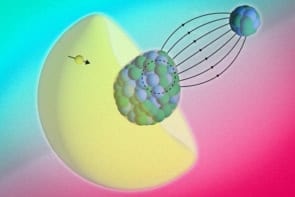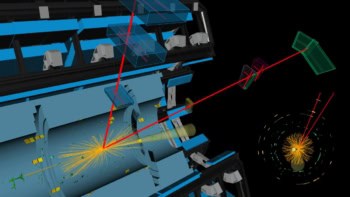Sir Rudolf Peierls: Selected Private and Scientific Correspondence, Volumes 1 and 2
Sabine Lee (ed) 2007 (Volume 1) and 2009 (Volume 2)
World Scientific Press
£86.00/$146.00 hb 880pp; £91.00/$168.00 hb 1120pp

Rudolf Peierls “would make a very good Englishman” observed Lord Rutherford, who got to know the young German theorist during Peierls’ long stay in Cambridge in the early 1930s. Then in his mid-20s, Peierls was reserved, slightly aloof but unassuming, and averse to political extremes. He also had a strong sense of both duty and fair play.
Rutherford’s description was prescient as well as apt. About five years later, Peierls became an Englishman, having been granted British nationality after resolving not to return to his native land after Hitler came to power in 1933. By then, Peierls had attained an international reputation for his work on quantum theory, which was earned not so much for coming up with new ideas as for answering questions that had sprung up on the research agendas of others.
As Peierls’ colourful Russian-born wife Genia suggested, scientists can be classified as golfers (who prefer to work on their own) or as tennis players, who thrive by working with others. Peierls was a tennis player, who collaborated with dozens of first-rate physicists, including even the usually solitary Paul Dirac. To stretch Mrs Peierls’ analogy, her husband was a virtuoso player on a wide variety of surfaces – he did fine work on solid-state and nuclear physics, and on quantum field theory. He also took a lively interest in the political dimensions of physics and wrote copious letters to his colleagues.
Sabine Lee, a historian at the University of Birmingham in the UK, has spent the better part of a decade collecting Peierls’ correspondence. Sir Rudolf Peierls: Selected Private and Scientific Correspondence presents 1320 of Peierls’ letters in two hefty volumes that span seven decades. Lee divides the material into 11 periods and introduces each one with a biographical essay, pointing out important themes and particularly telling letters. The result is a remarkably detailed record of Peierls’ life, much more rewarding than his worthy but rather bloodless autobiography Bird of Passage, which suffered from his inability to write a word about anything or anyone that might be deemed unjust or unseemly.
Most of the first volume concerns the intertwining stories of Peierls’ courtship of Genia (also a physicist) and of his ascent as a researcher, working closely with Werner Heisenberg, Lev Landau, Hans Bethe and a host of others. Neither Peierls nor his wife spoke each other’s mother tongue, so they spoke and wrote in their second language, English. Genia never did quite get the hang of it, but Peierls swiftly became bilingual. The lovers’ correspondence is charming and full of insights into the physicists of the time, especially when discussing Peierls’ friendship with Bethe and his sometimes difficult relationship with the hypercritical Pauli, who had no compunction about telling Peierls that he did not like his physics. Lee has chosen not to translate a few dozen letters written in German, which is unfortunate for those who do not speak the language; the footnotes only add to the pain of exclusion, as she presents them – tantalisingly! – in English.
In 1937, when Peierls was just 30, the University of Birmingham appointed him to its chair of theoretical physics, his first permanent job. When the Second World War began, he put his fundamental research on hold and promptly wrote his most influential paper. In a few days in March 1940, he and fellow refugee Otto Frisch conceived a way in which it might be possible to build an atomic bomb in the foreseeable future. The idea, written up in a splendidly clear memo, was scrutinized by a government committee but Peierls, anxious that the Nazis might be first to develop the weapon, thought the British authorities were dragging their feet. In April 1940, he wrote to them with his characteristic pith and directness: “I feel I cannot permit myself the luxury of reserve”. Several letters in this section give useful insights into the development of the atom-bomb project and its gradual takeover by the Americans. When they eventually set up the Manhattan Project to build the first nuclear weapons at Los Alamos, Peierls became one of the project’s leading theorists.
After the war, he returned to Birmingham, where the theoretical-physics department soon “left Oxford and Cambridge far behind”, in the words of Freeman Dyson, who contributes an eloquent foreword to the collection. Happy to be described as a Peierls protégé, Dyson recalls the months he spent in his boss’s happy but chaotic home, and how Peierls – despite his management commitments – did the best work to emerge from Birmingham at that time.
In 1963 Peierls took up the Wykeham Chair of Physics at Oxford University, apparently intending to repeat his success in Birmingham. But this time he seems to have found the job quite a challenge. Impatient with inflexible administrators, he was also past his best as a theorist; according to Lee, “he saw himself as a facilitator of dialogue more than an active participant”. It is slightly painful to read about Peierls trying to come to terms with the idea of quarks, though he proved a cogent critic of John Bell’s work on the fundamentals of quantum theory. Peierls retired from the post in 1974 but continued to work hard, mainly trying to persuade governments to limit their nuclear arsenals.
Most touching of all his letters are the ones he wrote after his wife’s death in 1986 to Bethe, his closest friend, in the twilight of their years. By the summer of 1994, when Peierls’ health was failing rapidly, he moved into a residential home just outside Oxford. On 8 September 1995, Bethe wrote to him, looking back on their lives: “You had a full and good life, and I thank you for letting me participate in it.” A few days before the arrival of this wonderful note, Peierls died.
Lee has done a superb job of editing this correspondence. Impressively researched, meticulously annotated and immaculately produced, both volumes are a pleasure to read and should have a place in every library of modern science. She has helped us to better appreciate someone who was not just a first-rate theorist, but also an uncommonly distinguished Englishman.



